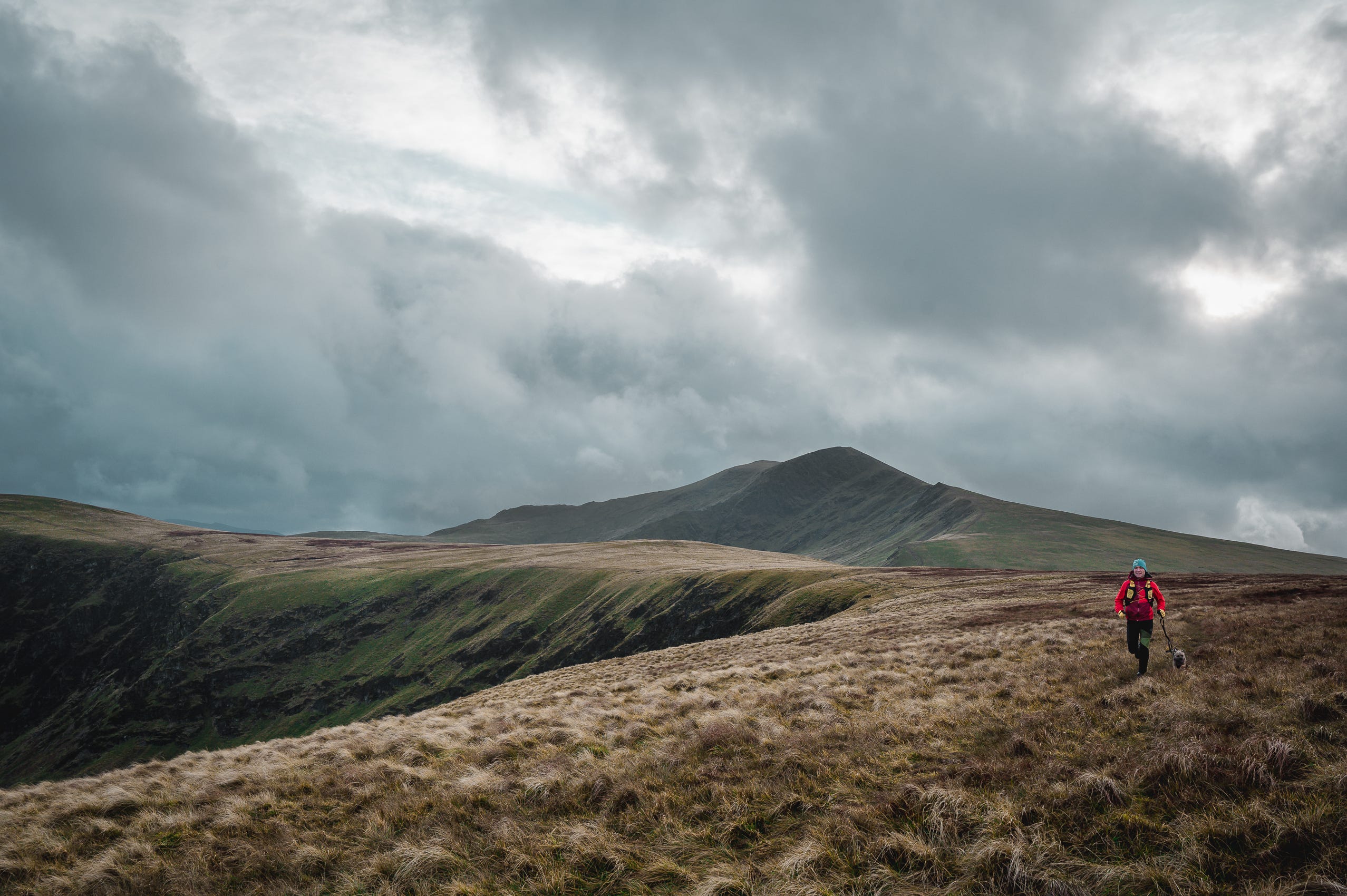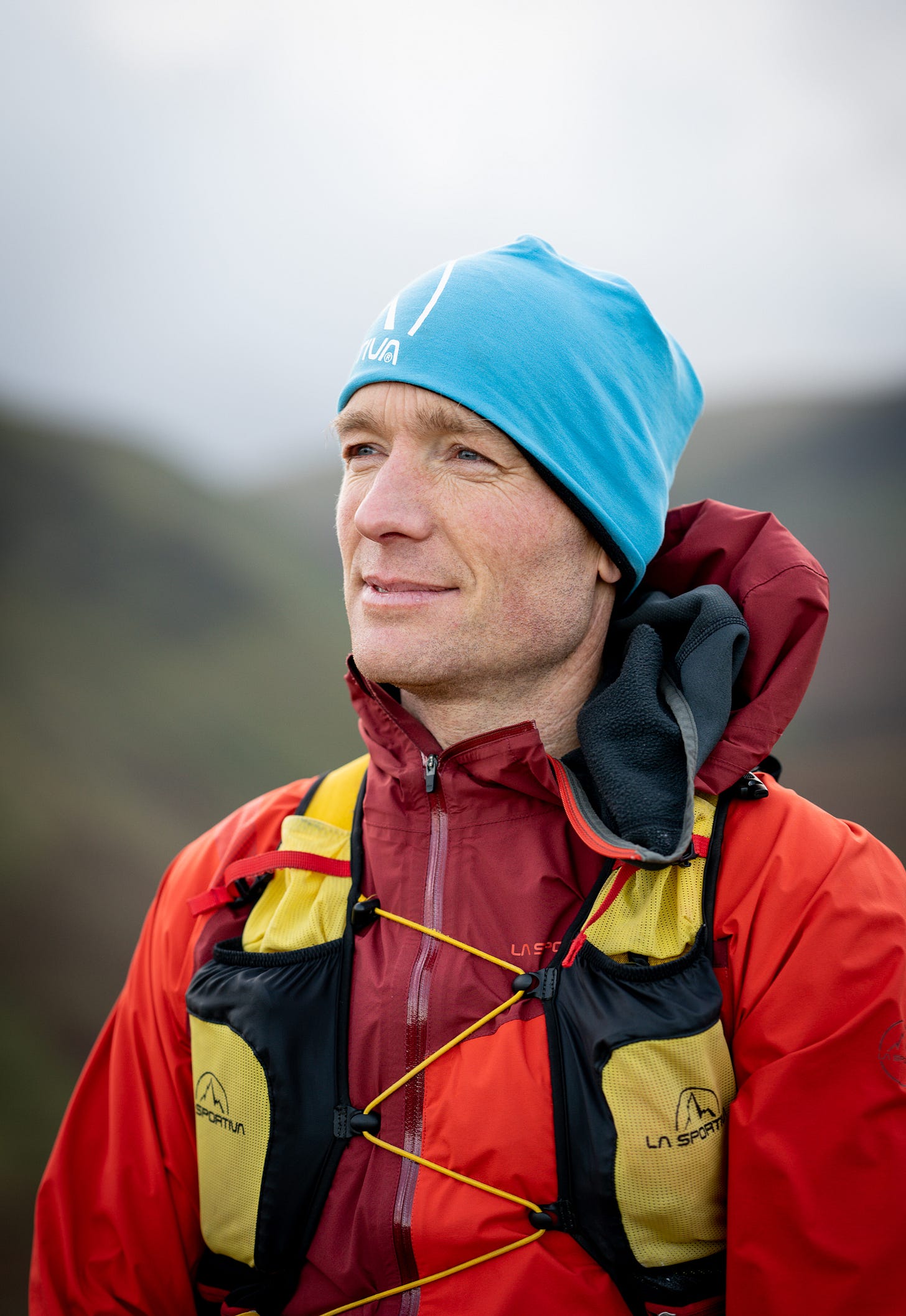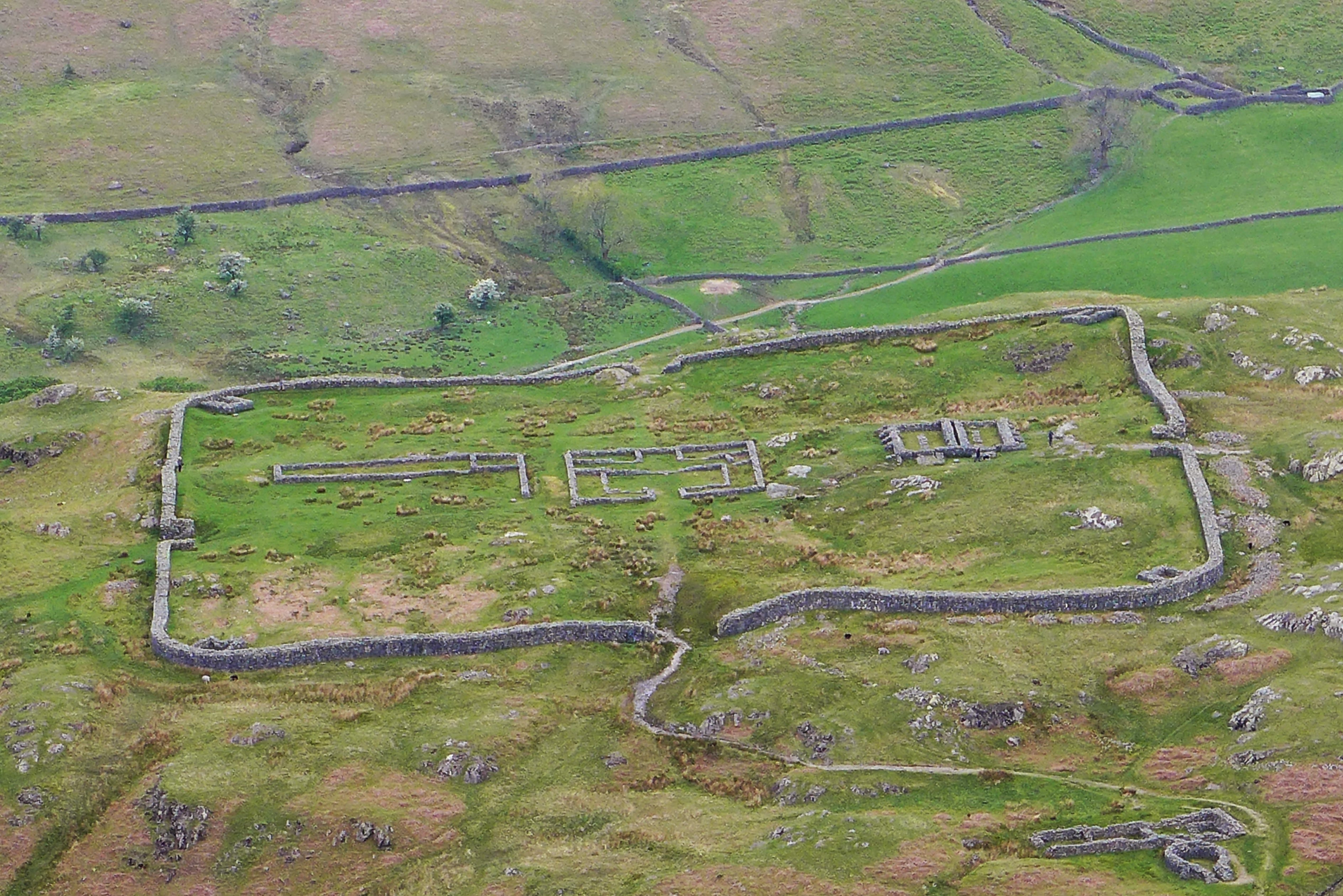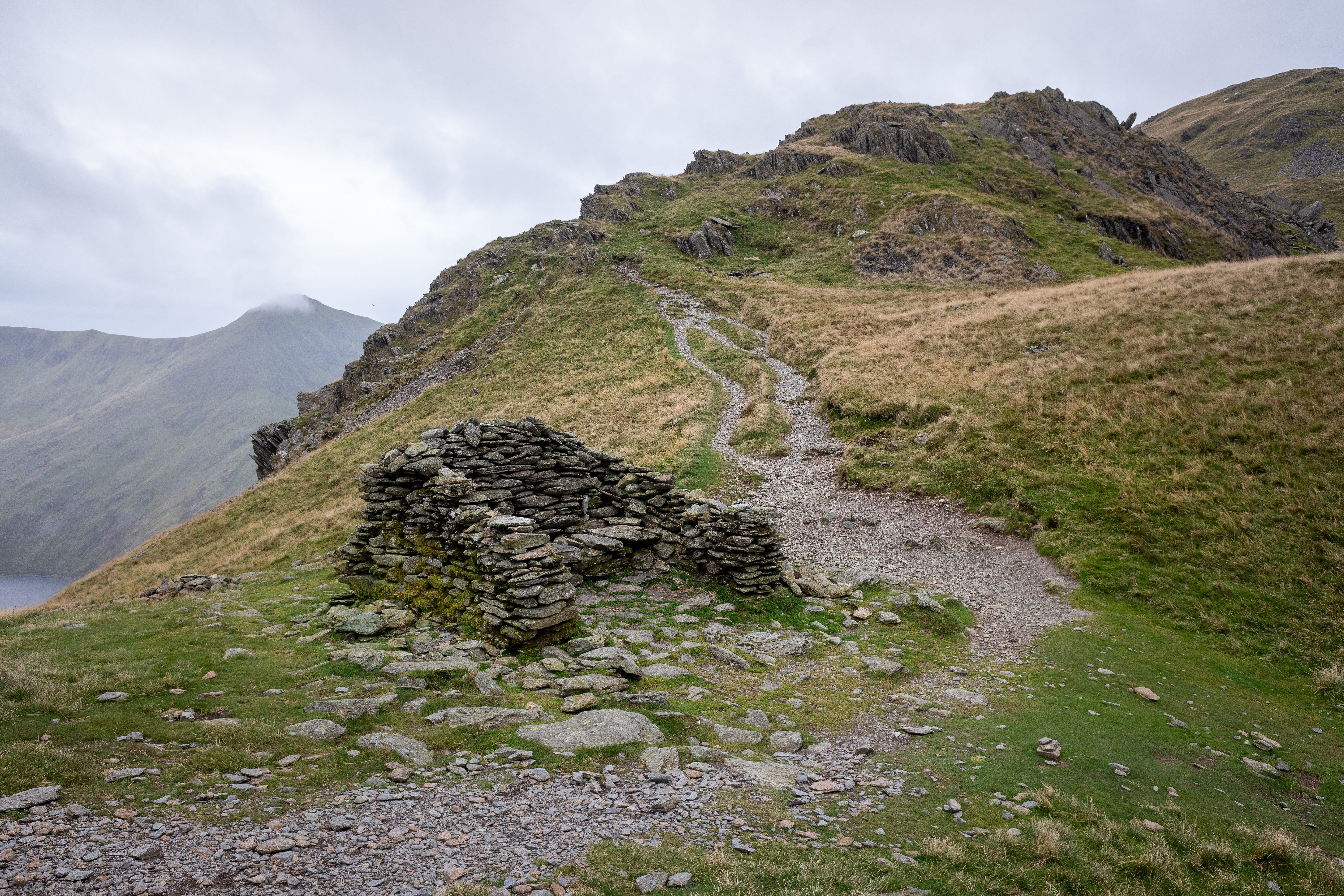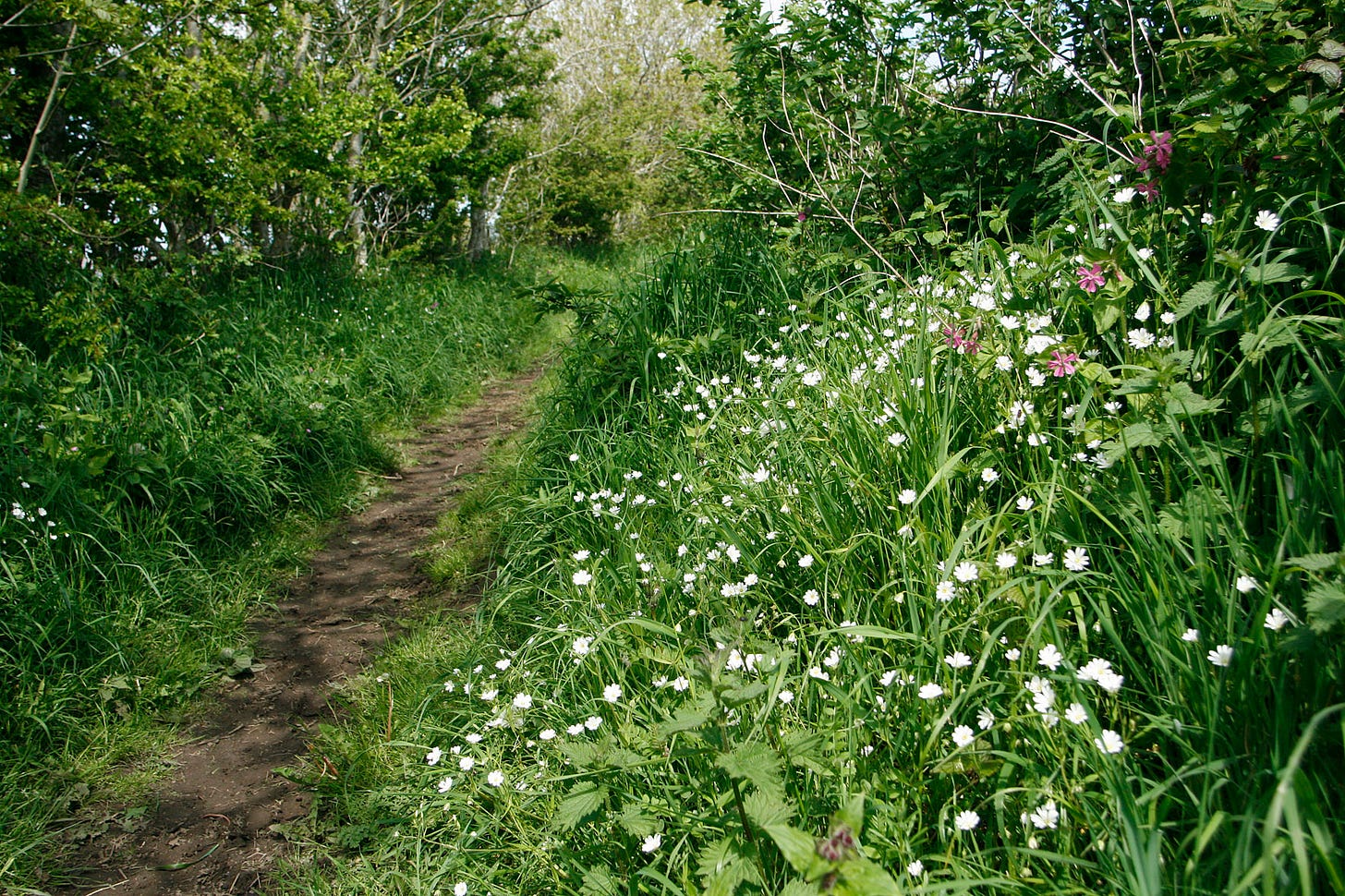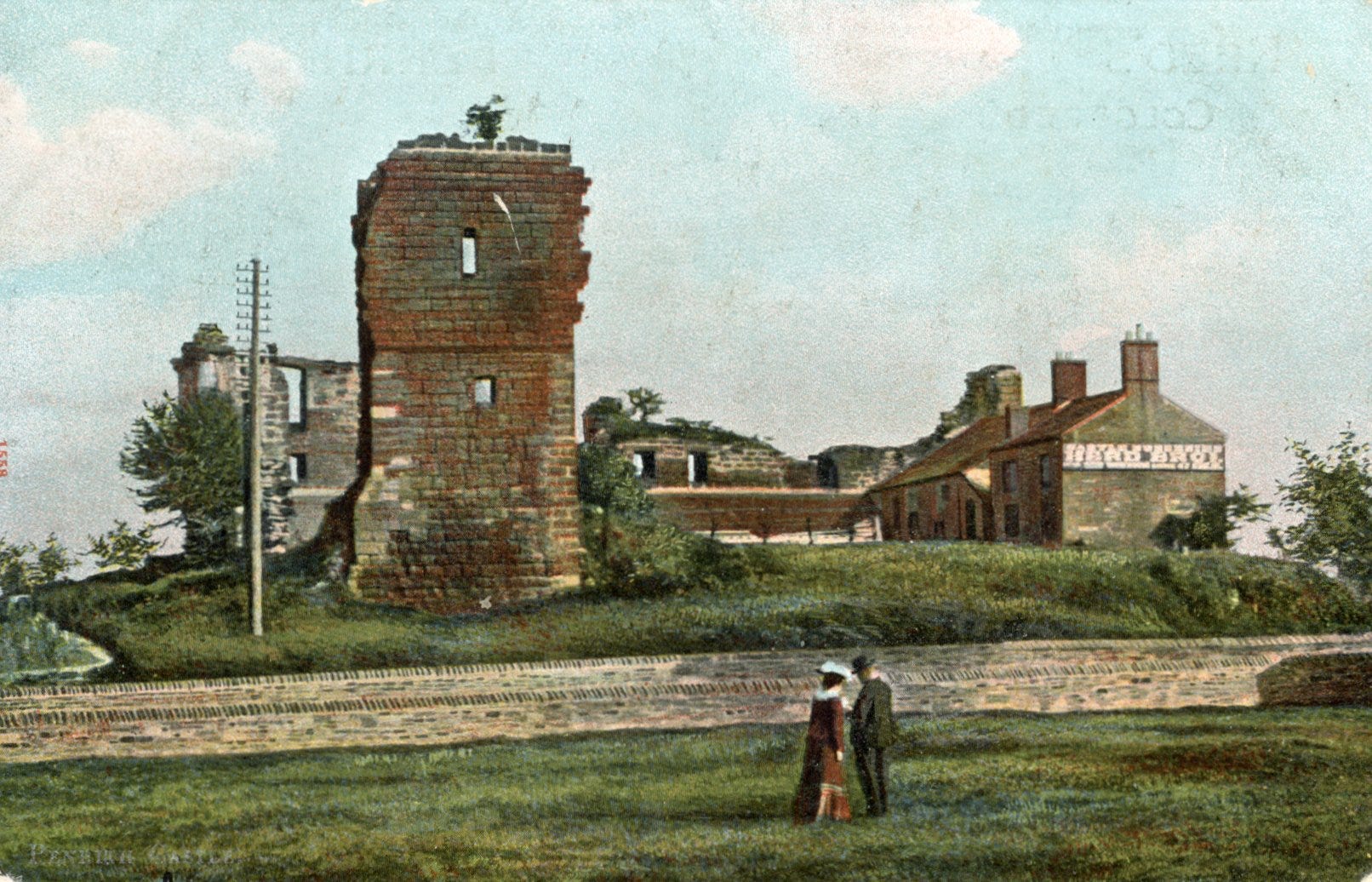Hefted newsletter #7: February 2025
Despatches from Cumbria and the Lake District, from the team at Countrystride and Inspired by Lakeland
Our February News Gather features a landmark win for protected landscape campaigners, Lakeland for sale?, TiK Tok tourist risks and Jennings Ale back behind the bar; Danielle Ledbury profiles Kim Collison – winner of this year’s Winter Spine; Alan Cleaver gets into the Valentine’s mood; and our man in the mountains, Mark Richards, picks his five favourite Lakeland passes.
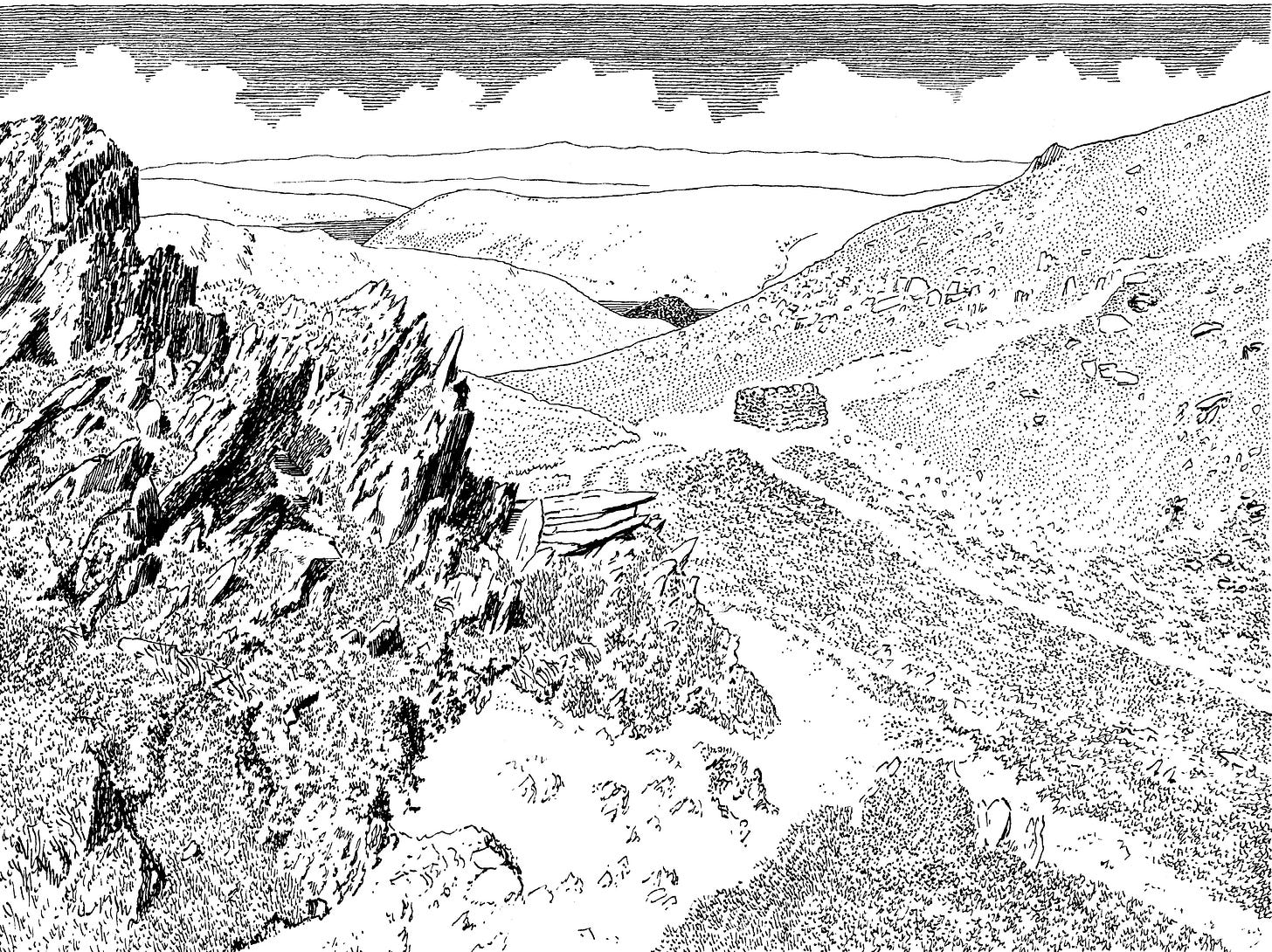
The gather: Pick of the Cumbrian headlines
It has been another busy month for water, sewage… and Matt Staniek at Save Windermere. First up, United Utilities (UU) dropped its legal fight to block access to data on the discharge of treated sewage into Windermere. Secondly, Save Windermere has collated evidence suggesting that with a “96% reduction in species diversity” below the sewage works, the Far Sawrey Wastewater Treatment Works is “not necessarily compliant with its descriptive permit”. Matt is calling for a new ‘Windermere Clause’ to be added to the Ministerial Code that is used to interpret Section 101A of the Water Industry Act 1991. “This clause would require decision-makers to give greater weight to environmental and public health benefits,” says Matt, “when considering sewer connections in protected landscapes.” Finally, Matt has been named one of Big Issue magazine’s Changemakers of 2025.
On the national stage, clean water campaigners have reacted angrily to suggestions that the Treasury is seeking to divert funds from the government’s water restoration fund. The fund – currently totalling £11 million – was set up by the Conservative administration to hold fines imposed on polluting water companies. “I appreciate that the Labour government has inherited a mess,” said Kathryn Soares, chief exec of the Nene Rivers Trust, “but I think this is a deeply appalling decision for a Labour government given the promises they made, and it is a worrying indication of where we are headed.” More from The Guardian.
…Meanwhile, UU has announced a 32% rise in bills over the next five years. More from the BBC.
Gavin Capstick, chief exec of the Lake District National Park Authority, is the subject of Countrystride #144. Four months into the role, Gavin gives a wide-ranging interview about his Eden Valley upbringing; the inherent tension built into National Parks' DNA; the 40% real-time reduction in government funding over the past decade... and why Rory Delap is his Cumbrian hero. More from Countrystride.
Keswick is the parking fine capital of Cumberland, with four of the five worst penalty charge hotspots located in and around the town. According to Cumberland Council’s highways and transport strategic board, more than 4,200 parking tickets were issued in Keswick over the past year. Top fine hotspots included the C2057 Portinscale To Grange Road (1,291 tickets), Station Road (545) and Bell Close Car Park (464). More from The Keswick Reminder.
Jennings Ale will soon be back on tap! Two-and-a-half years after Jennings Brewery in Cockermouth was closed by then-owners Carlsberg Marston's Brewing Company, local couple Kurt and Rebecca Canfield – who have acquired the site of the brewery, as well as rights to sell Jennings beers – have announced that brewing will return to the historic site. Chris France, managing director at Jennings Brewery Ltd, said he had “recipes for about 100 beers”, and that Sneck Lifter and Cocker Hoop were “overriding favourites to come back”. More from CAMRA.
Hugh Walpole’s “little piece of heaven on Catbells” is on the market for £740,000. Brackenburn, located at Manesty, was the Herries Chronicles author’s home from 1924 until his death in 1941. The hillside property was visited by a string of literary figures, including Beatrix Potter and J. B Priestly. More from Cumbria Crack. Walpole’s life and works were the subject of Countrystride #95.
A group of drivers have been rescued after ignoring a ‘road closed’ sign. Their car became stuck approaching Newlands Hause from Keswick after passing the sign that had been erected because of icy conditions. They were rescued by members of Keswick Mountain Rescue. A spokesman said: “The consequences of a slide on the icy Buttermere side do not bear thinking about.” More from The Westmorland Gazette.
The rise of Tik Tok, coupled with the growth in year-round tourism, is risking the viability of Mountain Rescue teams. After the busiest rescue year on record, team members are questioning how much capacity there is in a stretched system. “If the numbers continue to rise, I don’t know whether it is sustainable in the long run,” said Dan Farley, of Patterdale Mountain Rescue. More from The Guardian.
You wait months for a Lakes-set TV show/film, then three come at once, with views around Derwent Water prominent in the new Netflix Harlan Coben thriller Missing You, Keswick and its environs featured in Bridget Jones: Mad About the Boy and Windermere taking a final-act turn in Patrick Dickinson’s debut feature Cottontail.
Campaigners have won a potentially landmark case in the protection of National Parks after a judicial review found that a car park expansion in the south of England was unlawful. The Dedham Vale Society argued that the extension – at Manningtree station in Dedham Vale, a designated national landscape on the Suffolk/Essex border – which added space for 200 cars alongside lighting columns and a 190-metre-long steel wall, did not ‘seek to further’ the purposes of protected landscapes. Charles Clover, chair of the Dedham Vale Society, said the outcome was an “enormously important victory”, not only for Dedham Vale, but for all protected landscapes, including National Parks. “It means the new statutory duty on official bodies to ‘conserve and enhance’ national landscapes and national parks in their decisions must be complied with by all official bodies.” More from The Guardian.
A semi-fictional version of the Lakes is the backdrop of a new computer game inspired by the 1957 Windscale disaster. Atomfall, from Rebellion, is set in a post-apocalyptic Cumbria, and sees players fight for survival among picturesque landscapes. According to Rebellion: “The picture-perfect postcard setting is a hostile landscape that hides a dark mystery”… Which is how many of us feel after a night out in Hawskhead. More from Cumbria Crack.
“Paradise” is coming to Geltsdale, with plans for a landscape “that sings with life” following the expansion of the RSPB’s land holding in the valley. The charity have been working at Geltsdale, in the northwest of Cumbria, since 1990. Purchase of the final third of the Tarnhouse Farm estate means RSPB can start work on a new five-year plan, planting thousands of native trees, installing leaky dams and reintroducing endangered species like water voles. More from the BBC.
Cumbria’s food scene continues to flourish. First up, Jack Bond, head chef at Whinlatter’s Cottage in the Wood, and Mark McCabe, head chef at Henrock by Simon Rogan in Bowness, are appearing on BBC’s Great British Menu. Jack’s appearance comes at the same time that his Michelin Star eatery – co-owned with wife Beth – has been named in SquareMeal’s top 100 UK restaurants for 2025, while Nicola and Kevin Tickle’s Heft, in High Newton, became the highest climber in the list, breaking into the top 20. A hefty (as it were) 13 restaurants in the county have been awarded Michelin stars in the 2025 Michelin Guide.
Four men have been jailed after a plot to smuggle cannabis between Whitehaven and the Isle of Man went wrong. More from the BBC.
Lakes campaigners have been recognised at the Campaign for National Park’s (CNP) annual Protector Awards. The team at Wild Haweswater were named runners up in the ‘Marsh National Park Nature’ category, while litter-picking group Tidy Climbers, led by Hannah Mitchell, were ‘Young Changemakers of the Year’ runners up. More from CNP.
Windermere-based kitchenware firm Lakeland is considering putting itself up for sale. “Lakeland is one of the UK’s most loved and trusted brands,” said a spokesperson for the company, which was founded in 1964 and now employs around 1,000 staff nationwide. “In response to the challenging retail environment, we are considering a number of options to ensure a sustainable and long-term capital structure.” More from The Westmorland Gazette.
Red caterpillars, orchids, dragon fruit and Irn Bru were all ingredients in preserves submitted to the 20th annual World Marmalade Awards. More than 3,000 jars of marmalade have been entered into the Dalemain-hosted awards, with categories including ‘A Taste From Home’, ‘Merry marmalade’ and ‘Man made’. Winners will be announced in April. More from the BBC.
Lake District hunt packs have been issued warning notices by Cumbria police. Pack masters at Blencathra Foxhounds and Melbreak Foxhounds have been served community protection warning letters under the Anti-Social Behaviour Crime and Policing Act 2014. A police spokesman said the letters warned each group that officers had received numerous reports regarding “a number of issues” including “anti-social behaviour, noise nuisance and the detrimental impact on the community”. More from The Keswick Reminder.
Mungrisdale’s Kim Collison has won the Winter Spine. In some of the gnarliest conditions in recent years, Collison claimed victory on the 268-mile course – the full length of the Pennine Way – in 82 hours 46:32, the third-fastest time in race history. Lucy Gossage won the women’s race in 87 hours 41:38. More from Athletics Weekly.
…and a new record has been set for the Winter Wainwrights. 51-year-old Carol Morgan – previous alumni of The Dragon’s Back and Winter Spine – set out from Keswick’s Moot Hall at 10pm on Boxing Day, completing the 320-mile, 214 peak running epic (here’s her tracker data) in a record 193 hours 51:47, smashing James Gibson’s 2002 record by five hours. More from The Keswick Reminder.
The last bank in Windermere is to shut on Mayday. Closure of the NatWest branch – which has seen custom drop by 62% in the last five years – will mean Windermere residents’ closest bank is 10 miles away in Kendal. More from the BBC.
Kendal is getting a £13.5 million facelift. The multi-million pound ‘Heart of Kendal’ settlement, originally awarded as part of the Conservative’s Levelling Up funding in November 2023, and delayed following months of uncertainty, will pay for a remodelled market hall, a new campus for the college and changes to Market Place and Kent Street. More from the BBC.
There is bafflement in Workington after a play area has repeatedly been wrapped in plastic. In a statement about Cusack Crescent playground, a Town Council spokesperson appealed for culprits to “stop the strange behaviour”. More from Cumbria Crack.
…and finally, a Kendalian has purchased a strange-shaped banana. More from the BBC.
Spine champion Kim Collison
Winner of the legendary Winter Spine – the ultra-marathon along the 268-mile Pennine Way – undertaken this year in deep snow, was Kim Collison from Mungrisdale. The below conversation is taken from the book Why We Run.
“I’ve always been competitive. At school I remember waiting to hear if I’d been selected to run at the county cross-country championships, but then a substitute PE teacher ignored us runners and selected football players instead. The next year, I had something to prove, and I ended up winning every cross-country event.
That was a pivotal learning moment for me: I realised that I could be stubborn, and that stubbornness allowed me to turn things around.
I got into adventure racing in my teens, advancing to two-day events that combined biking, running and paddling. It was during those adventure races that I began to dig deeper – seeing how far I could go by pushing myself. It was like a drug.
Lessons on the hill
I’ve learned a lot about life from running. Patience, for example. On the hill, you can’t force something; if a problem occurs, you need to put it to one side, move on and focus on what you can control. Emotional awareness – knowing what frustrates or angers you – is important.
You need to learn from your failures. I’ve had a lot of them – like in the 2023 Spine Race when I had to retire 125 miles in at Tan Hill – but I easily rationalise those moments and accept them as part of my journey.
They don’t define who I am; they just help me look at what I can do better to get it right next time. In hindsight, I pushed myself too hard. But if you push yourself, occasional failure is inevitable. If you’re not failing, then you’re probably not pushing your limits.
The journey on the hill reflects your wider journey in life. One of the most significant events in my own life was losing my dad when he was 47. I was just 19. The process of grieving and realising that life’s short helped shape me; it’s enabled me, over the years, to accept loss and push on. At the time, I tried to block it out. Running became part of the healing process; I realised what joy it brought me.
Flow on the fells
I love that feeling you get as endorphins are released; that sense of flow – when you’re fit and moving fluidly – and when you’ve put in weeks of training and everything starts to kick in. Your legs become kind of ‘bouncy’ and you think to yourself, ‘This is how it should be!’
I also love the sensory element of being in the mountains – whether it’s a joyous, sunny day or you’re fighting the elements. Life becomes simpler because you are entirely absorbed in the moment.
I got into fell-racing proper when I settled in the Lakes in 2008, but my main passion is the longer challenges and ultras – events with a sense of journey.
Those long runs bring in other skill sets – they’re about more than just running performance. In a fell race, it’s about how fit you are and your capacity for that event, but longer runs require additional skills – navigation, considered hydration, problem solving and mental capacity to keep pushing.
24-hour Fell Record
One of the most memorable moments in my fell-running career was coming into Braithwaite having broken the 24-hour Fell Record in 2020 [the record is held by the athlete who can summit the most Lakeland peaks in 24 hours]. I managed 78 tops. It was one of those records you don’t expect to break. I gave it a go because I was in great shape, and it worked out. Crossing the finish line, you’re rewarded for the hard work and dedication.”
The above article and photos come from Danielle Ledbury’s book Why we run – Tales of fell and trail running in the Lake District.
‘The Pimp’*: Five of the best…
Lake District hill passes
As picked by Mark Richards.
#1. Hard Knott Pass – 393m
The medieval name for Hard Knott was Wainscarth, derived from the Old Norse vegn meaning ‘road’, making Wainscarth the ‘road passage’. If anything, that original name is more accurate today – the pass laid to tarmac in the early 1940s – but like so many passes that have forged new purpose over mountain cols, its romantic past has been cast to the winds.
The reframed name of Hard Knott deflects attention from the considerable history of this key route through the fells. The biggest clue to the road’s past is the majestically-sited Roman fort (pictured above) on a rising shoulder of high ground above Brotherilkeld Farm.
The fort – linking the coastal fort at Ravenglass with garrison settlements at Ambleside and Kendal – has long been misidentified on OS maps as Medibogdum. The literal Latin reading of this name is ‘middle of the bow’, and clearly this high shelf setting does not fit the description. The Roman fort south of Kendal – within the tight bend of the River Kent – matches it perfectly, which is where most Roman scholars now site Medibogdum. The original Roman name for Hard Knott fort is, like Wainscarth, lost to the winds.
I have walked purposefully over Wainscarth twice, each time tracing the Roman road up from Jubilee Bridge in Eskdale to the fort itself, which is remarkably well-preserved; there is even the outline of a bathhouse just shy of the open road. Garrisoned by the Fourth Cohort of Dalmatians (in greater modern Croatia), the fort only functioned during the 20-year reign of Emperor Hadrian before being abandoned.
Leaving the fort and continuing uphill, one comes upon a massive pile of stones. Archaeologists believe it was collected by the garrison to open up a parade area – still visible on the ground – the heap forming a rostrum from which the officer would bellow out instructions… in Croatian, of course.
The Roman road is still apparent in the bracken below Border End. At the pass cairn, note the bridleway sign directing right (south). This is the line of the Roman road, which zig-zags down to Black Hall. Once a youth hostel, readers of a certain vintage may remember the farm’s notorious collies – and the ankle nips they were famed for.
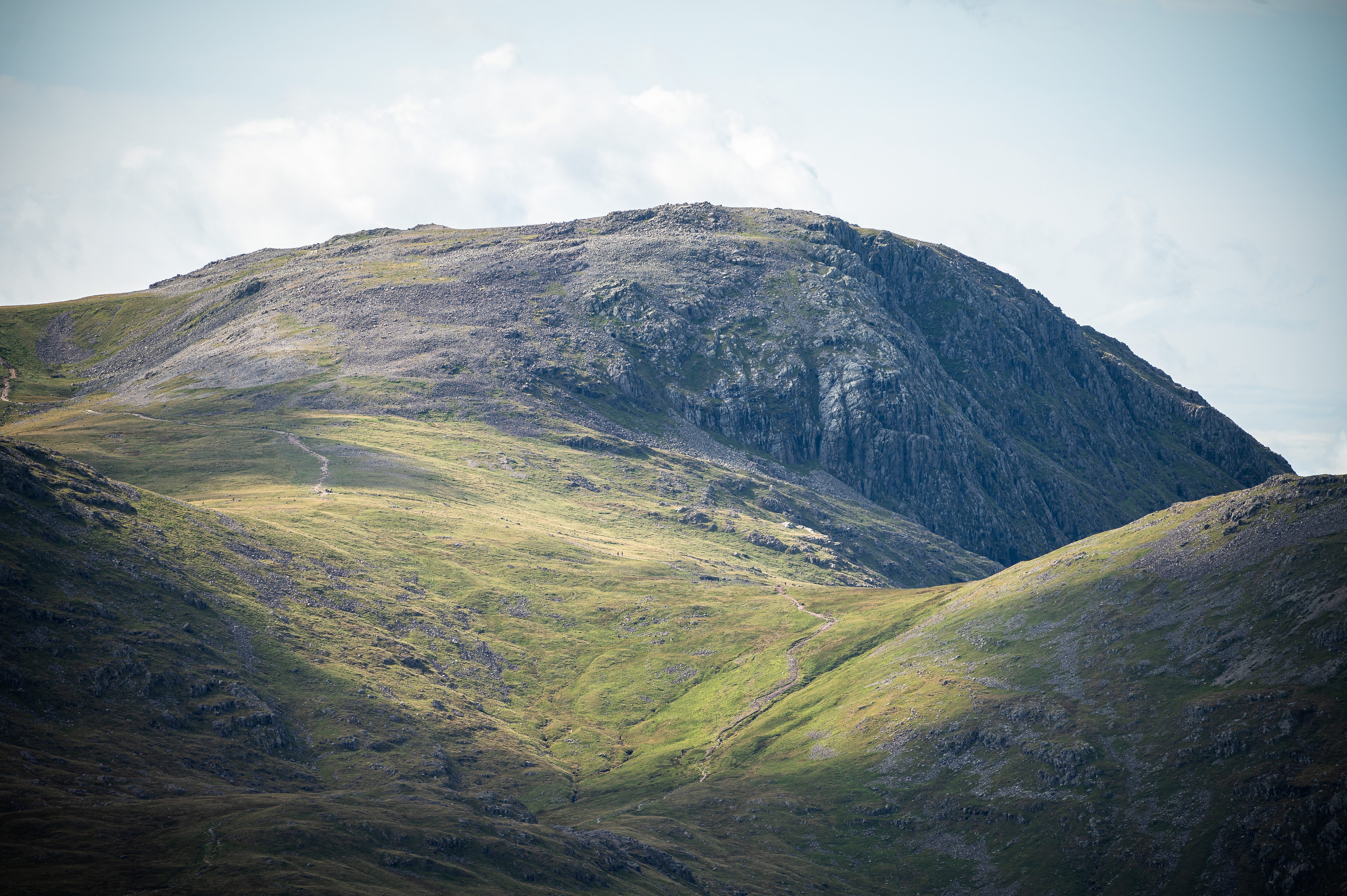
#2. Esk Hause – 758m
As the first Lakeland pass I ever visited (way back in 1969), Esk Hause – the high passage on the northern shoulder of the Scafell massif – has personal meaning.
One of the perennial oddities about this busy walkers’ crossing is that it’s not the col many people attribute the name to.
The ‘false hause’ is located immediately southwest of Allen Crags. This innominate pass gives access between Wasdale and Great Langdale, its waters draining not into Great Moss – and thence the Esk – but the Derwent. The true Esk Hause is located at a higher cross-ways (sunlit in the above photo) in the broad depression between Esk Pike and the crag-capped slopes climbing west onto Great End. This is the true passageway between Borrowdale and Eskdale.
Not that there should be doubts; the pass is above a noteworthy cross-wall wind shelter, a long-time provider of respite with origins aligned to the cause of recreational walking.
19th century pony-riding tourists came up this way with their hired guides – invariably local farmers earning much-needed cash – their trail proceeding into Calf Cove. Metal rings can still be found on rocks in the Cove, to which ponies were tethered before walking parties alighted and proceeded on foot over the tortuous stony ground via Broadcrag col to the exalted summit of Scafell Pike.
While the OS shows the pecked green dashes of a footpath descending south from Esk Hause alongside the headwaters of the River Esk, there is no tempting path on the ground. This is a blessing; in mist, wayward walkers might be lured down Knott of the Tongue into the dauntingly lonely basin of Great Moss.
#3: Sticks Pass – 748m
It may be the highest named pass in the Cumbrian mountains, but Sticks is neither rugged nor trammelled with difficult ground. It is, instead, a (mostly) gently-graded bridleway used by all and sundry – and has been for several thousand years.
The first recorded mention of the Pass was in 1589, where it was noted as Stikes and the stikes mosse. A century later it became ‘Top of Sticks’.
The route takes advantage of a shallow dip in the rollercoaster Helvellyn range, historically linking the communities at the foot of Thirlmere with those at the head of Ullswater.
In the long age before tourism, this mountain district was composed of scattered dale settlements with little in the way of nucleated communities, and communication was reliant on these short-cut routes, undertaken on foot or pony-back.
The name conjures a time when it was deemed necessary to mark the pass’s line with sticks, suggesting that wayfarers on occasion got lost in disorientating mist or, worse, winter snows. Reminiscent of the Morecambe Bay traverse – where laurel twigs are set the day before a Cross-Sands walk – it is indicative of the importance of the pass that someone had the job of ensuring the path was consistently marked.
One oddity of the pass is that the watercourses that drain from the threshold cairn are both Sticks Gills – one dropping west and one east. So if you want to arrange a meeting at Sticks Gill, confirm which of the two you mean.
#4: Nan Bield Pass – 621m
Some passes are indelibly fixed in the fellwalker’s mind as strategic break points onto or off high ground. This lovely little pass in the Far Eastern Fells is one such, holding a bounty of happy wandering memories.
Located on the comparatively short ridge connecting Harter Fell with Mardale Ill Bell, the pass’s historic significance was as the ancient north/south route between pre-flood Mardale and Kentmere.
Uniquely set in the tight, wind-whistling gap is a bedraggled bield – or shelter – complete with a welcome stone bench. The alcove windbreak can only be a few hundred years old – perhaps allied to the lady alluded to in the pass name (Nan is a pet form of Anne, surname unknown). Was Nan involved in constructing the bield? More likely she was known to make regular journeys this way.
Most walkers don’t cross Nan Bield. Rather they descend to the nick during a circuit of the Kentmere fells, or access the High Street range using the well-defined inter-valley bridleway as a secure line in weather fair or foul.
The two approaches to the pass could hardly be more different. The southern approach from Kentmere – 4 miles from the village – glories in fine views of the Ill Bell range.
Altogether shorter (1.6 miles) is the ascent from the car park at Mardale Head. From here, a heavily used path strikes off south-west and comes almost at once upon a fork in the way. The stony path, left, targets Gatescarth Pass, and the exquisite valley of Longsleddale. That to the right, meanwhile, rises by a tall deer fence-gate to come by the cascades of Smallwater Beck and the subsequent outflow of Small Water. On the northern shores of this stark mountain tarn are two tiny beehive shelters – probably as old as the pass-topping bield above.
#5: Scarth Gap – 446m and Black Sail Pass – 545m
Ennerdale harbours no trace of significant settlement. As such, most travellers down the ages will have had no cause to linger en route between Buttermere and Wasdale. Black Sail Youth Hostel – an adapted shepherd’s bothy, now a focal stopover on the Coast to Coast Path National Trail – confirms the old link between Scarth Gap and Black Sail Pass. It will have functioned as a sanctuary since time immemorial, initially for shepherds, latterly for pack-men and other travellers undertaking this remote upland crossing.
Striding on from the hostel, the pass-connecting route comes over an extensive area of glacial moraine before climbing to the saddle of Black Sail. Find here a remnant line of metal stakes climb crazily up Kirkfell Crags – a fine mild scramble of a route onto the summit of Kirk Fell. The stakes indicate the old Ennerdale Fence, marking the former boundary of the Earl of Egremont’s estate and, later, the catchment of Ennerdale Water.
The pass name was first recorded in 1322 as Le Blacksayl, with Black Sail Beck recorded as brook of le Blackzol. The dialect term sail – also captured in the fell name Sail – refers to a ‘dark peaty puddle’, of which there are plenty in the soggy saddle.
Mark is author of four Countrystride Walking Companions, each featuring dozens of walks, line illustrations and insights into local landscape, history and heritage.
* For the avoidance of doubt, ‘pimp’ is the number five in Cumbrian dialect.
Cumbriana: Lovers lonnings
A column of curiosities, with Alan Cleaver
At Valentine’s Day thoughts turn to love, and perhaps a meander down one of Cumbria's romantic lonnings with our paramour.
A lonning is a dialect term for a short country lane.
For centuries, a walk down a wooded lane has been the perfect way to woo a young man or woman, and our county is resplendent in these quiet country paths, where sweet nothings can be whispered without fear of interruption.
Guards Lonning, near Gosforth, is one example of these secluded old ways, set suitably distant from the village itself, but offering a beautiful walk with outlooks over the Wasdale Screes.
Sociologist William Morgan Williams studied Gosforth in 1956, and was told about this traditional trysting place, but noted in his book Sociology of an English Village: Gosforth, “it is open to conjecture whether its popularity is due to the fact that it is immune from interference by all but the most athletic Peeping Toms or whether, as is locally maintained, the journey up the hill is sufficiently strenuous to discourage the ‘flirts’.”
Over the centuries, many Cumbrian lonnings have acquired the name ‘Lovers Lonning’. One of the more famous is at St Bees, dropping down from the B5345 running south from the village to the Coulderton Road. Here lovers can gaze across the Irish Sea to the setting sun – what could be more romantic? The lonning has also acquired the less romantic alternative names of Links Lonning (it used to be adjacent to a golf course) and Cow Lonning.
The most famous Lovers Lonning is Billy Watson’s Lonning at Harrington. This sadly-neglected lane – with fine views over the harbour towards Scotland – runs from Lime Road to the hamlet of Grayson Green and was made famous by a ballad written by dialect poet Alexander Craig Gibson in 1874.
Gibson lists all the lonnings in the area, but notes:
“Ther’ cannot be annuder spot so private an’ so sweet,
As Billy Watson’ lonnin’ of a lownd summer neeght!”
There are many Harrington folk who can still quote these lines, even if they are unsure of their source.
Local historians have mapped all the lonnings mentioned in the ballad, but sadly no-one has yet found out who Billy Watson was, if indeed he was a real figure.
I have made a note of all of the Lovers Lonnings I have come across in my travels (and other named lonnings). This Google map has had over 100,000 views to date – and they say romance is dead!
You can follow Alan on Twitter/X at x.com/thelonningsguy
Postcards from the past
‘Penrith Castle’ – Printed at the Works, Saxony, unpostmarked
“Dearest Mother. I will be home on Friday night as I can’t stop here any longer. It has rained every day since I came. With love from Dorothy. x.”




